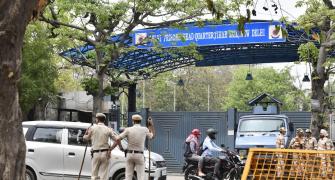About 13 per cent of the funds remitted by Non-Resident Indians (NRIs) in 2006 were invested in equity and real estate. While 20 per cent of the funds are parked in bank deposits, 54 per cent of remittances are used to meet family expenses, according to a Reserve Bank of India (RBI) survey.
The remittance flows to India rose 25 per cent to $25 billion in 2005-06 from $20 billion a year earlier. Of this, $13.5 billion was used by the migrant's family to meet requirements of food, education and health, $5 billion was deposited in local bank accounts and $3.25 billion was used for purchase of shares and property.
In 2006, the central bank undertook a survey of banks engaged in foreign exchange transactions. The data was collected from bank branches across major centres in India including Ahmedabad, Bangalore, Chandigarh, Chennai, Puducherry, Delhi, Hyderabad, Jaipur, Kolkata, Mumbai and Kochi.
The cities selected not only represented the major remittances receiving centres, but also the corridors for delivering remittances in the interior areas of the states.
Around 44 per cent of the inflows came from North America, followed by the Asian region comprising of the Gulf and East Asia, which contributed about 32 per cent of the funds received.
"The higher share of North America could be attributed to the growing strength of professionals in software and other technology related areas," said RBI. Remittances with an average size of $1,100 and above accounted for 52 per cent of the total value of remittance inflows, indicative of the high average size of remittance transfer to India. Senders preferred using electronic wires or Swift for transferring remittances from abroad over cheques and drafts despite it being more expensive, the survey found.
While, the cost of using Swift to send $500 from the US to India was 2.5-8 per cent, the average time taken was only 1-2 days. On the other hand, though the cost of remitting money through drafts and cheques was only 0.7-2 per cent, the transfer could take as long as 30 days. Transfers through debit and credit cards took 2-6 days.
Non-customers or customers in remote locations had to pay an additional 0.1-0.6 per cent for delivery of funds.
A RBI working group on cost of NRI remittances had, in May 2006, suggested that NRIs should route their remittances through a branch of an Indian bank or a foreign bank present in India.
Banks could also reduce fee-based costs to increase the volumes.
The group had also recommended removing the restriction on the number of exchange houses that a bank can tie-up with for a bank with adequate risk management controls in place.







